Soil Moisture
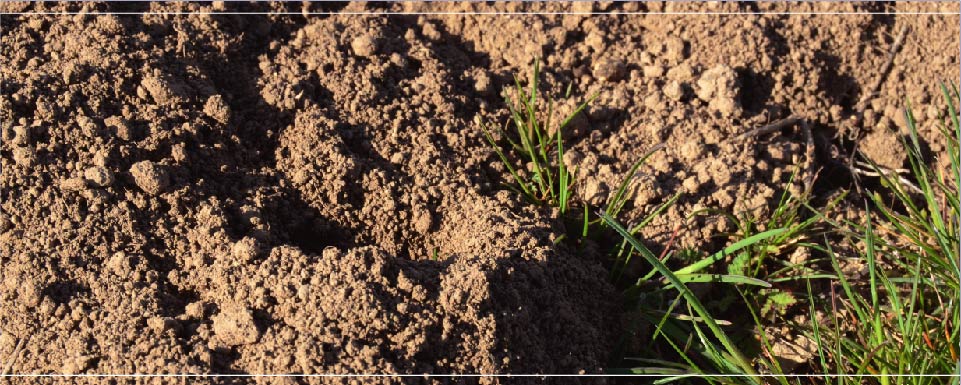
Defining Soil Moisture
All plants have 4 basic needs: soil, sun, air and water. As any great baker will tell you, it is the quality of your ingredients, used in proper amounts and ratios, that result in life’s best flavors.
Since water is absorbed by a plant’s roots through soil, it is pertinent in agriculture to understand how soil moisture affects growth. The concept of soil moisture is defined as the water that is bonded to soil particles. While we typically think of soil as a compact solid, it actually holds space for water capacity which allows for roots to grow and feed. On average, soil is made up of 50% solid material and 50% space, which is filled by either oxygen or water based on climate and irrigation. This careful balance of water and oxygen within soil creates a harmonious environment for a plant to thrive.
An imbalance of moisture within soil can cause flooding if water levels are too high, or wilting of plant life if it is too low.
Thus, soil moisture percentages determine if and when additional water is needed in agricultural production.
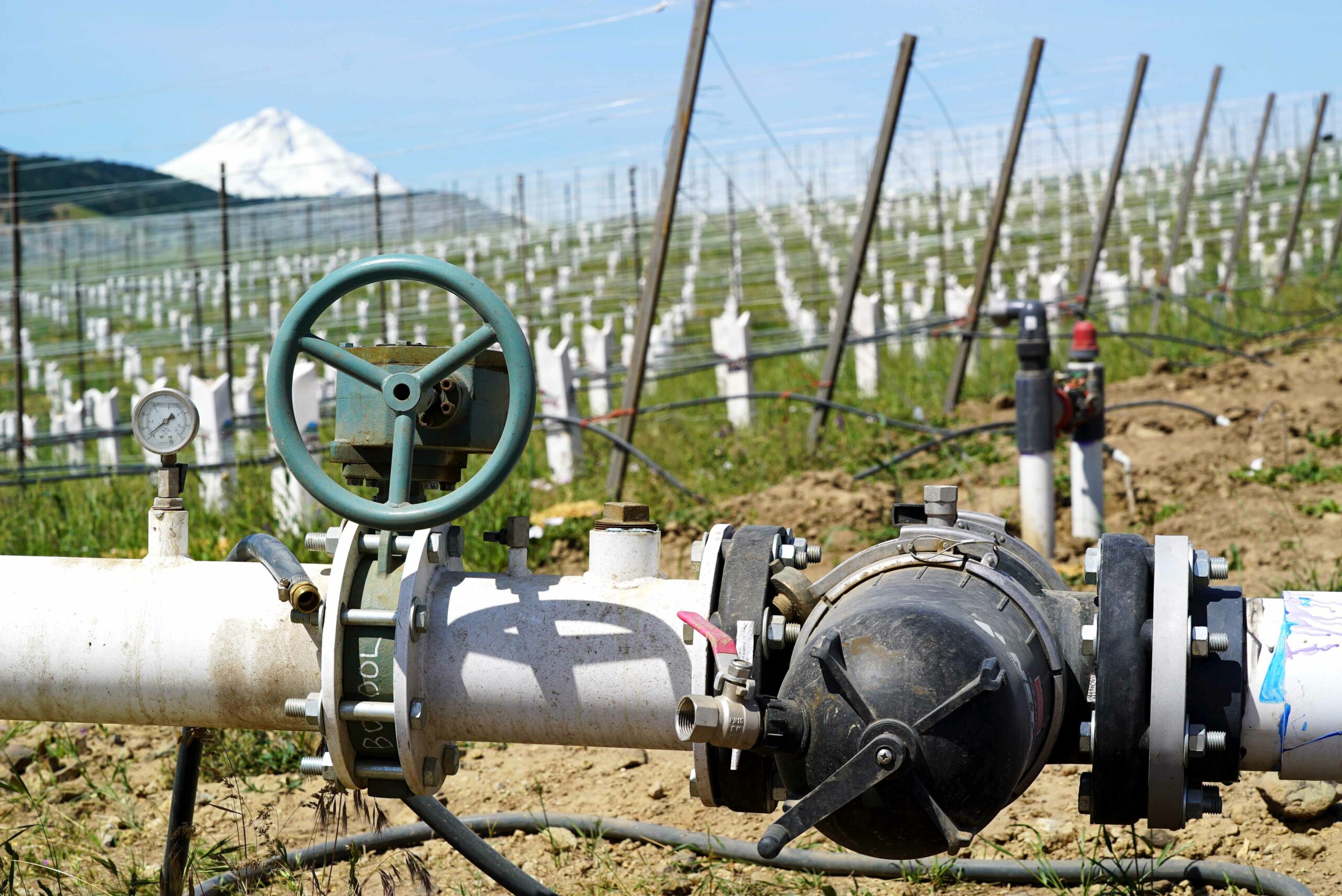
The consistent monitoring of soil moisture enables Threemile Vineyard to strategically minimize the use of irrigation during the growing season. Conscious of climate change, regulated irrigation in areas which require supplemental water for agriculture is essential to reduce water waste.
Soil Moisture at Threemile
Soil moisture levels are monitored, in real-time, throughout Threemile Vineyard to determine the exact amount and frequency of water needed during a precipitation deficit. As a young vineyard, these techniques will encourage and support root growth to a stage of development where they can access more available water. A mature root system will conceivably establish the means to water autonomy, thereby reducing the need for supplemental irrigation.
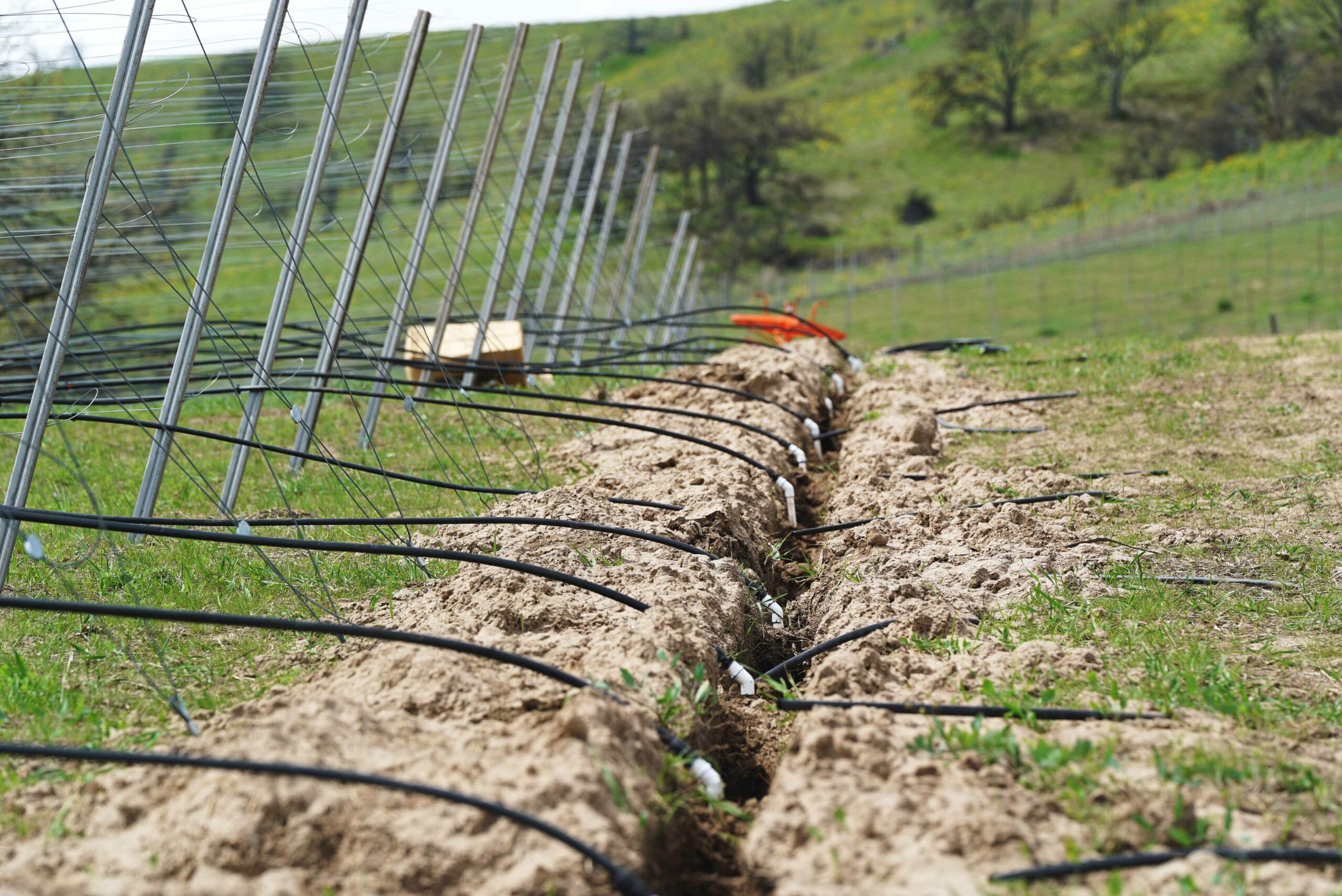
Measuring Soil Moisture
At Threemile, there are six sentek soil probes actively tracking moisture levels, each measuring at a depth of four feet. At an increment of four inches, the probes have electrodes that make contact with the soil to measure conductivity. The water within the soil works like a conductor, indicating more water when more electrical current is present.
Viticulturist monitors soil moisture levels year-round, and observes the patterns of soil moisture levels in each block.
“The two steepest blocks, B and J, are always the driest. They see a lot of wind, and high evapotranspiration on the hillside. Typically, blocks G and F have the highest soil moisture content due to the topography; drainage from the farm and surrounding hillsides passes through these blocks as well as sections of others. Block G requires a lot less supplemented water than other blocks”
For healthy vine cultivation in our terroir, we estimate that maintaining at least 32% soil moisture in the peak heat of the growing season is optimal. Our website offers a unique experience for all to track our soil moisture levels live at the vineyard. Check out the resource to see our data sets and enter:
username: 3mile password: vineyard
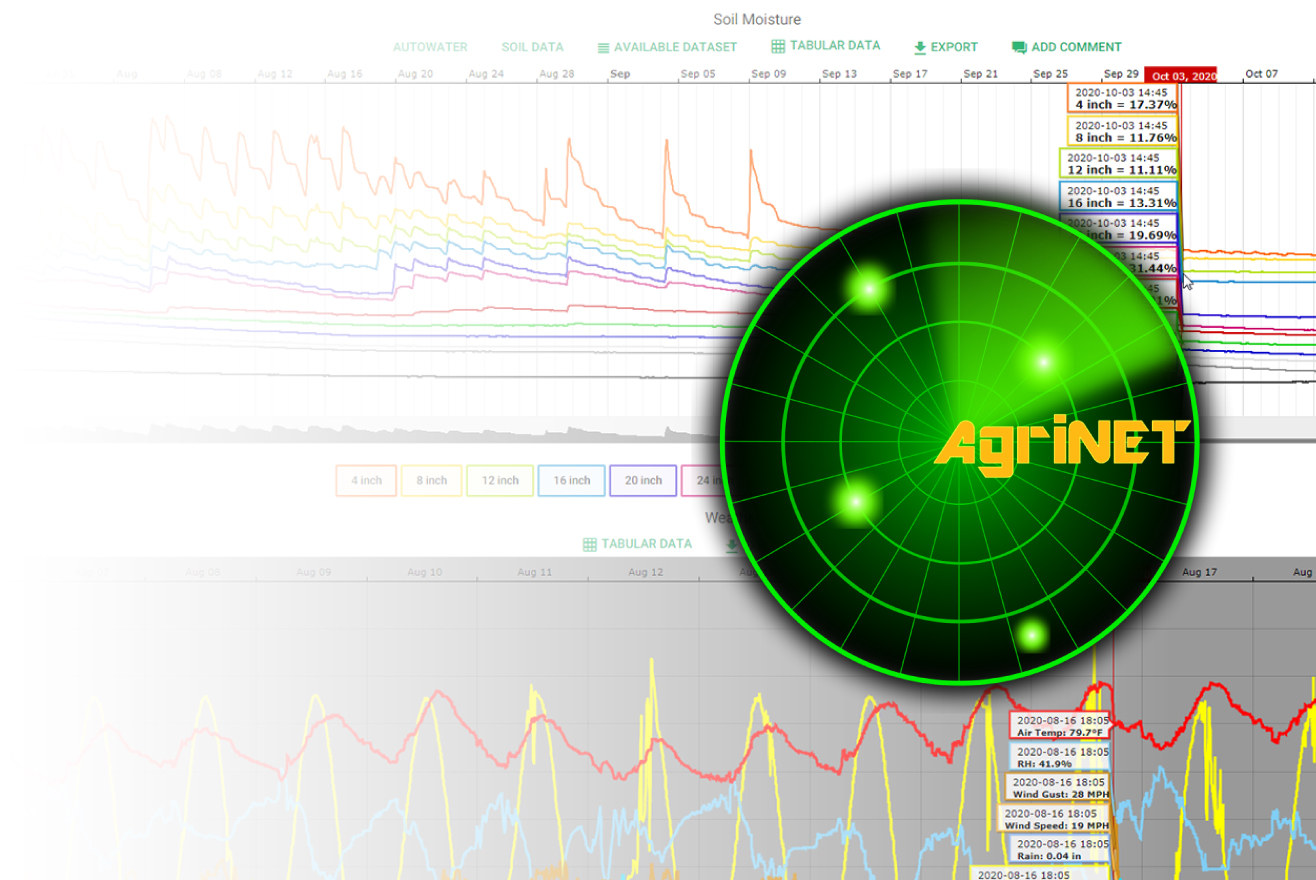
Sustainability in Irrigation
Compared to 2021, which was our driest and hottest year on record at the vineyard, soil moisture levels are sitting higher in 2022. On January 7th, the top 12 inches of soil had more moisture than at any point last year. While moisture levels did somewhat normalize in February, the top 12-16 inches are still holding more water than the overall average of soil moisture in February 2021.
With regular weather conditions, we are able to keep irrigation as low as 6 hours of watering every 7-10 days during the growing season. To keep the gallons per minute low, we water a single block at a time, keeping the pressure gentle on our water well. While we cannot entirely eliminate irrigation, the technical sophistication of our system equipment ensures watering practices are minimal and efficient.
Our vineyard philosophy is based on the idea of a symbiotic ecosystem with limited human intervention. With thoughtful irrigation, native flora and fauna, and high diversity plant life per square acre, Threemile collaborates with what nature has already provided.
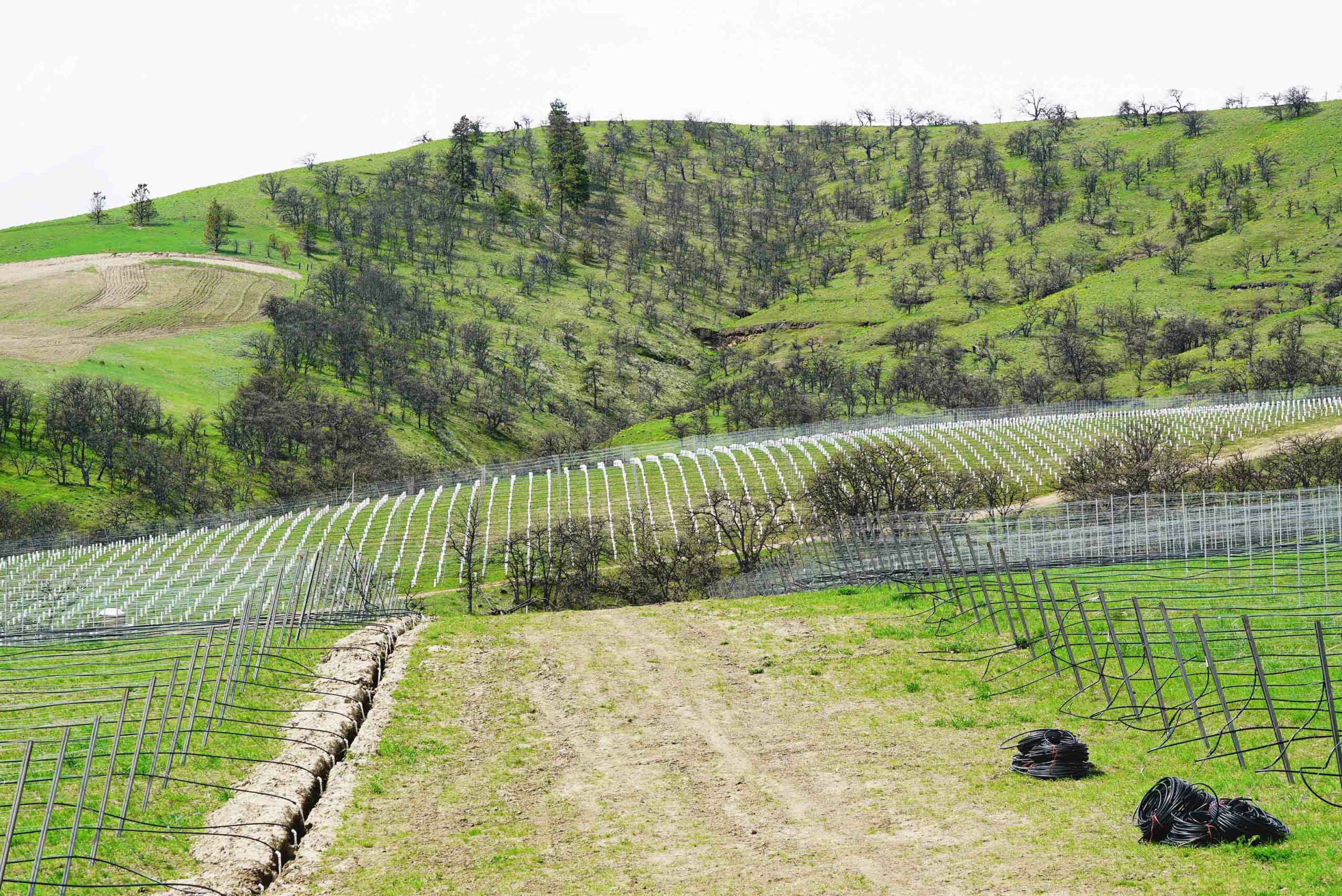
The Future of Growth
The extension of roots and their associations within the vineyard ecology over time is vital to the grapevine. Not only does it create autonomy from supplemental water, it also becomes an expression of terroir. The time and aging that goes into a mature vine formation provides the character that builds wine’s distinguished flavor profiles. As our roots extend, the tastes of our grapes will reflect our unique terroir, unveiling the distinct flavors to come from Threemile Vineyard.
